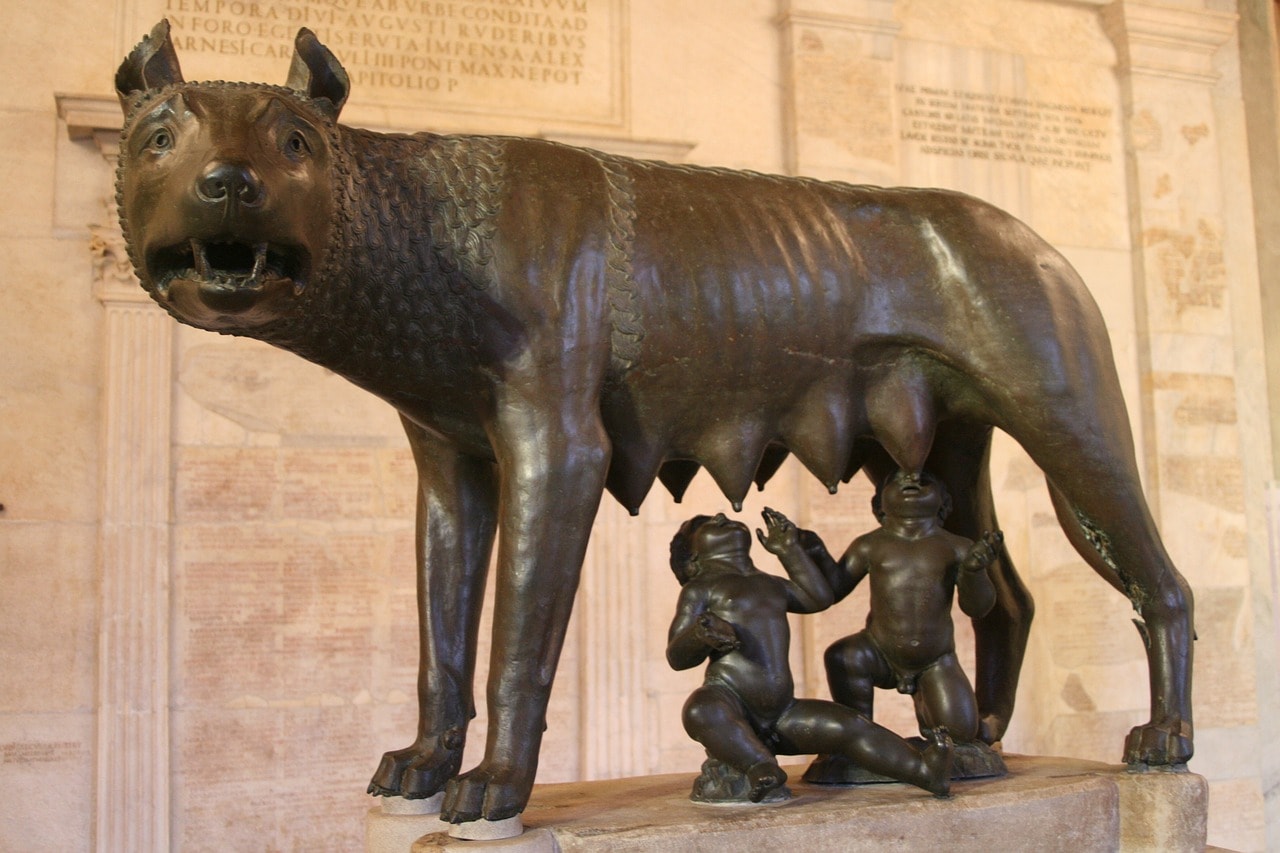
Table of Contents
As one of the biggest, most long-lasting, and defining empires in world history, Rome has left its mark across multiple continents. Rome itself was strongly influenced by many cultures too – including Greece, Dacia, and Scythia, Egypt, Partia, and Carthage, all the way to Britannia. As such, many of the popular Roman symbols and emblems were influenced by other civilizations, but all were Romanized.
Let’s take a look at the fascinating symbols of Ancient Rome.
1. Aquila
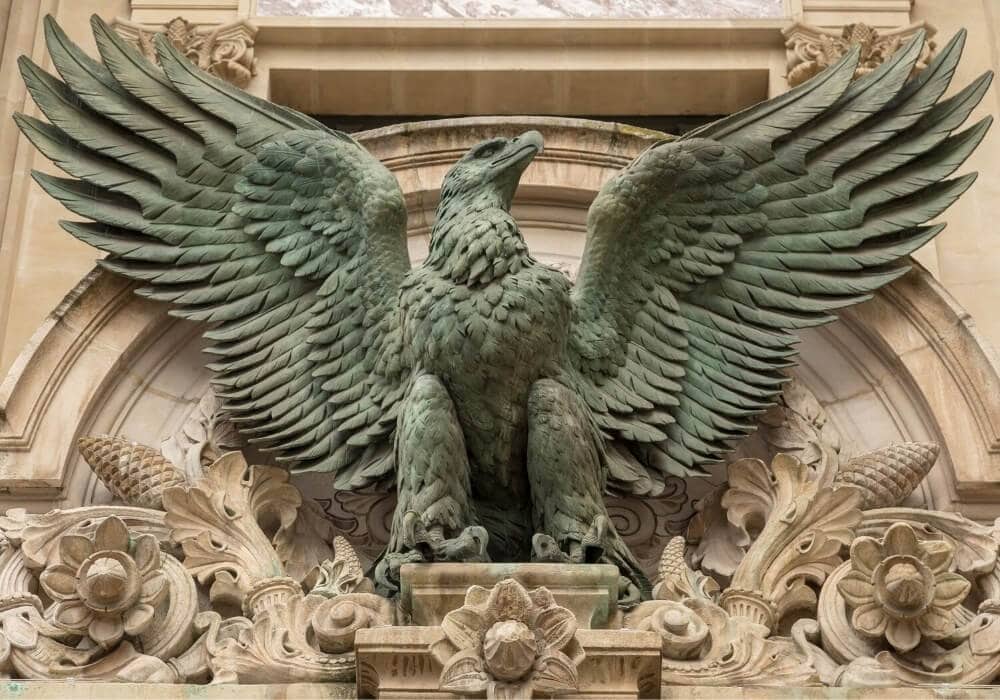
The Aquila is one of the most famous military symbols, not only in ancient Rome, but in the world today. The banner of the Roman legions, the Aquila was an eagle statuette raised on a pole with its wings spread wide. That’s what the term meant in Latin too – Aquila i.e. “eagle”.
On the battlefield, the Aquila was the very representation of Rome but it was more than that too. Most soldiers around the world are taught to love their flag, but the Aquila was all but worshipped by the Roman legionnaires. Their love for the Roman eagle was such that there were cases where the legionnaires have searched for lost Aquila banners for decades after a battle.
To this day, many countries and cultures in Europe have Aquila-like eagles on their flags specifically to show themselves as descendants of the Roman empire.
2. Fasces

The Fasces symbol is unique in more ways than one. It’s a real-world physical symbol rather than one that’s painted, engraved, or sculptured, even though that’s certainly done as well. The Fasces is essentially a bundle of straight wooden rods with a military axe in the middle of them.
The symbol was meant to represent unity and authority, with the axe symbolizing the capital punishment power of said authority. The Fasces was often given by public representatives to their leaders as a symbolic gesture of granting them the power to rule.
From ancient Rome, the Fasces has made its way into the government documents, emblems, and even money of multiple countries, including France and the U.S. The term itself was also used to name the National Fascist Party of Benito Mussolini in Italy. Fortunately, unlike the Nazi swastika, the Fasces managed to outlive Mussolini’s party and wasn’t tainted by it.
3. Draco
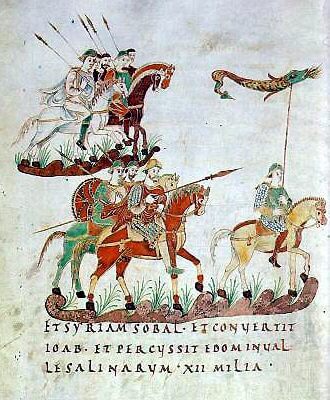
The Roman draco is one of the more unique military Roman symbols. Like the Imperial Aquila, the draco was a military banner, carried on a pole in battle. Its immediate practical purpose was to help organize and lead the troops in each cohort – such banners were a big reason why the Roman army had such unprecedented organization and discipline compared to their barbarian counterparts.
The draco was made out of a rectangular or square cloth piece and was woven to represent a dragon or a serpent. It was the primary banner, or ensign, of the Roman cavalry units, which made it all the more intimidating, waving above the speeding horsemen.
As for its origins, it was most probably taken from the Dacian draco – a very similar banner of the ancient Dacian troops which Rome had conquered – or from similar ensigns of Sarmatian military units. The Sarmatians were a large Iranian confederation in today’s Middle East while the ancient Dacians occupied today’s Romania on the Balkans.
4. She-Wolf
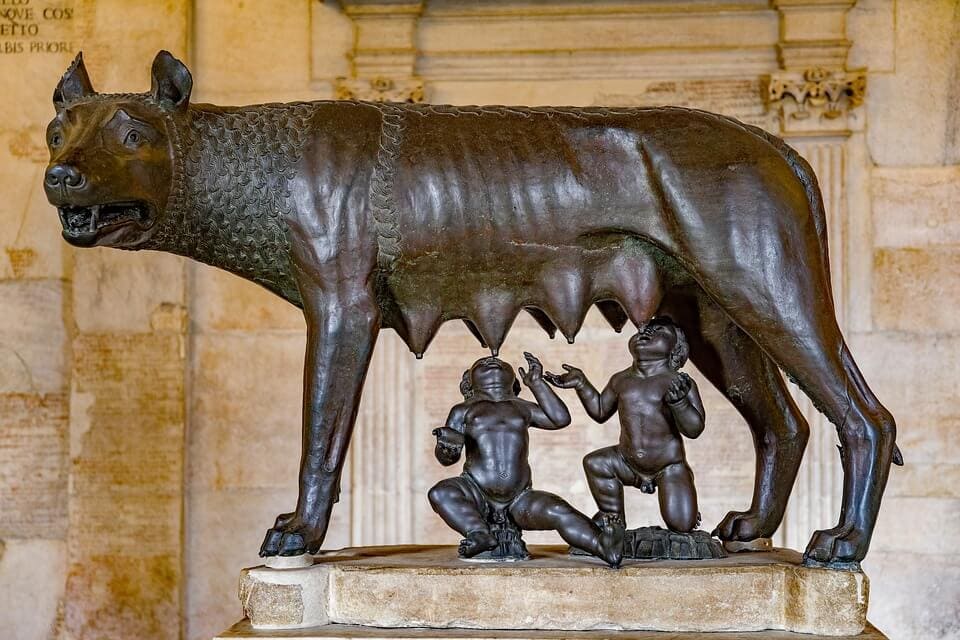
The Roman she-wolf, best known from the “Capitoline Wolf” bronze statue in Rome, is one of the most recognizable and defining symbols of ancient Rome. The symbol shows a nursing female wolf standing over twin human babies, the brothers Romulus and Remus – the mythical founders of Rome. The wolf is breastfeeding the two babies which is why the ancient Romans worshipped the she-wolf as the symbol that literally nursed Rome into greatness.
According to the legend, the two boys were the sons of Numitor, the king of Alba Longa, a city close to the future site of Rome. King Numitor was betrayed by his brother, Amulius who wanted to usurp the throne. Amulius threw the twins into the Tiber River, but they were rescued and nursed by the she-wolf until they were found and raised by the herdsman Faustulus.
Once they grew and matured, they overthrew Amuluis, restored Numitor to the throne, and went on to establish Rome. To this day, the Roman she-wolf is held in high regard in Italy and is even the emblem of the football team Roma from Rome.
5. Romulus and Remus
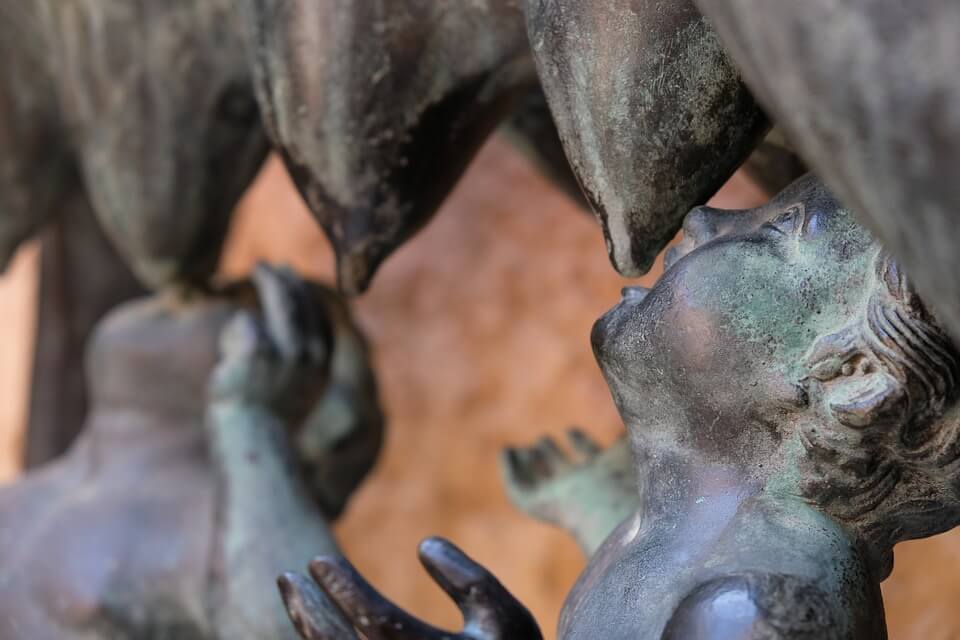
Together with the Roman she-wolf, Romulus and Remus are probably the most iconic figures associated with ancient Rome. The twin brothers were believed to have lived during the eighth century BCE before the founding of Rome.
Depending on which legends are to be believed, they were either the sons or grandsons of king Numitor, the ruler of the city Alba Longa, near modern-day Rome. Some legends say that they were the sons of Numotor’s daughter Rhea Silvia and the Roman god of war, Mars. In either case, according to the legends, the two brothers helped king Numitor take his throne back from Amulius and went on to found a city of their own.
They soon found the famous seven hills on which Rome now stands but disagreed on which hill their future city should be built. Remus wanted them to build on the Aventine Hill while Romulus preferred the Palatine Hill. They tried to resolve their disagreement in various ways until Romulus eventually killed Remus and founded Rome by himself.
6. Labrys
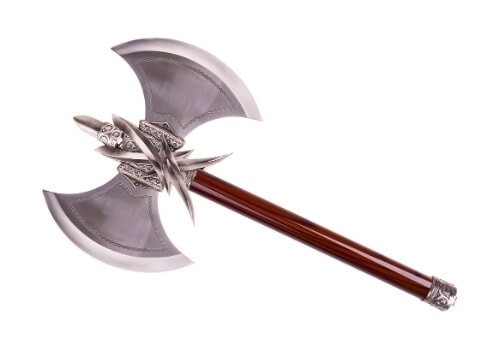
This famous double-bladed axe is a popular symbol in both Greek symbolism and Roman culture. The classical Greeks knew it as the Sagaris or Pelekys while the Romans also referred to it as bipennis. It also remained a popular symbol in the later Byzantine empire, which was the effective successor of the Roman empire after the fall of Rome.
Despite its militaristic look, the labrys is actually a symbol of femininity in many ways. The term originates from the Greek word labus which means “lips”. This connects the double-bladed labrys axe to the female labia. Its symbolism also connects it to the famous labyrinth in the Palace of Knossos from Greek mythology. In the 20th century, the labrys was also a symbol of Greek fascism but today it’s used mostly by Hellenic Neopaganists and as an LGBT symbol.
7. Asclepius Rod
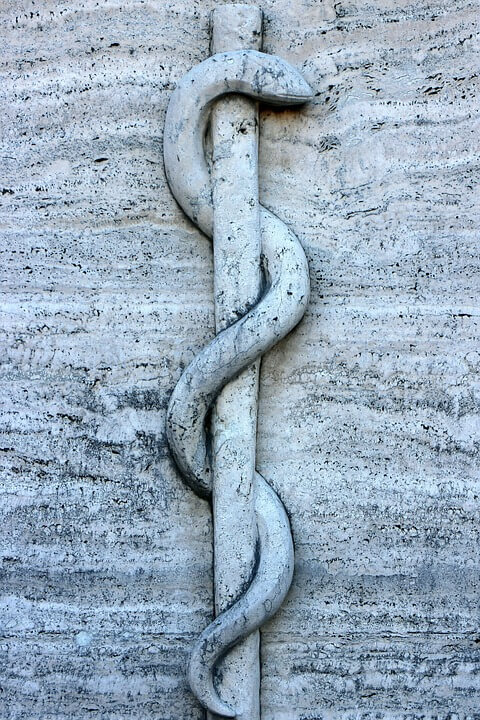
Also known as the Asclepius Wand, this symbol was popular in both Rome and Greece. Its path from the Balkans to the Italian peninsula can be traced through the Etruscan civilization which predated the establishment of Rome. Portrayed as a snake wrapped vertically around a wooden rod, the Rod of Asclepius is hugely popular today in the medical and pharmaceutical spheres.
The meaning behind this roman symbol has to do with the snake, commonly identified as a rat snake, shedding its skin. This made the Asclepius Rod a symbole of renewal, rejuvenation, rebirth, and fertility. Combined with the wand it’s wrapped around, the snake was viewed as the staff of the god of Medicine in both Rome and Greece.
8. Knot of Hercules
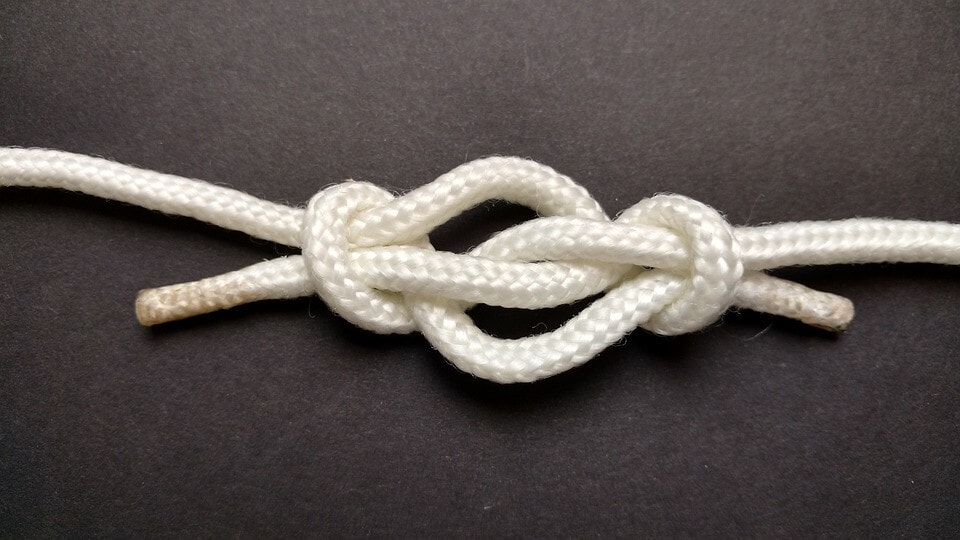
Despite its definitive Greek origin, the Knot of Hercules was a very popular symbol in ancient Rome. It was also referred to as the “Herculean Knot”, the “Love Knot” or the “Marriage Knot”. It was widely used as a protective charm and as a part of the Roman bride’s wedding dress. The knot was made from strong intertwined ropes and was tied around the bride’s waist, to be untied by the groom and the groom only.
Hercules was the protector of married life in Rome. As a result, the Herculean Knot was a lasting symbol of a long, happy, and fruitful married life. While this waist knot was eventually replaced by wedding bands today, it lasted as a symbol of marriage for millennia and was used throughout the medieval times as well.
9. Cimaruta
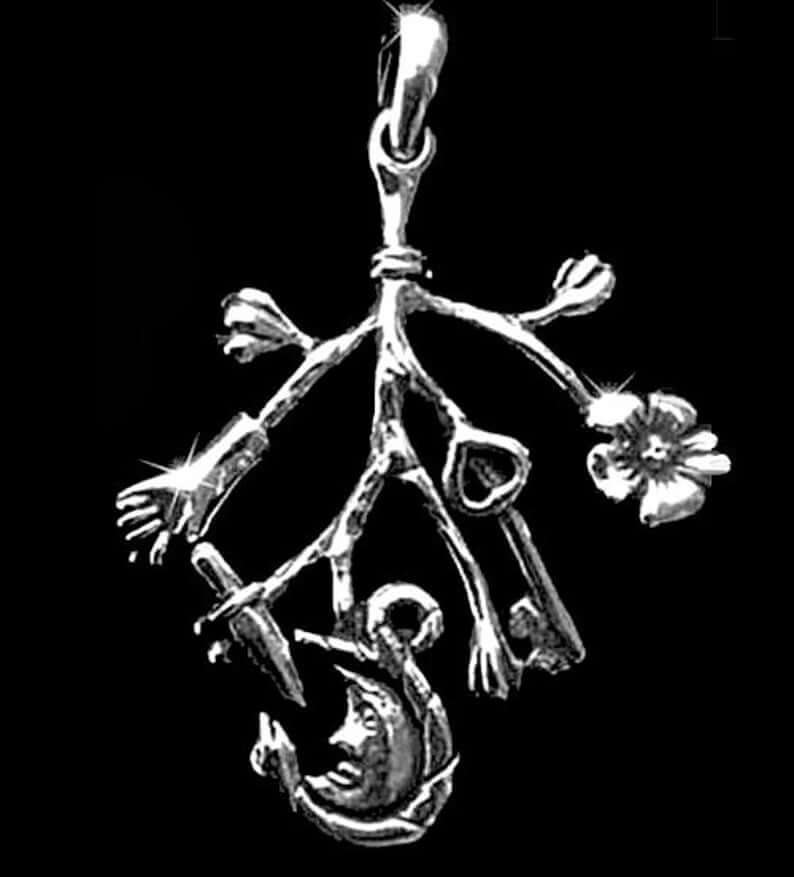
The complex design of the Cimaruta makes it look obscure and even random but it was a symbol almost all Roman babies and children were raised under. The Cimaruta was a popular amulet, commonly placed over children’s cribs for protection or worn around the neck. It means, “Sprig of Rue” which was one of the most sacred Italian plants.
The charm had the intricate shape of a rue sprig with three distinct branches. These were meant to symbolize the triple aspect of the Roman moon goddess, Diana Triformis – a maiden, a mother, and a crone.
From the branches, people usually hung many smaller charms making each Cimaruta unique. The charms people hung depended entirely on their personal preferences and on what they wanted to protect themselves or their children against.
10. Globe
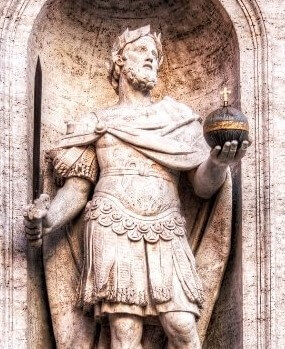
The Globe is one of those symbols that have managed to transcend Rome and is now viewed as a global symbol (no pun intended). It originated in Rome, where the god Jupiter and other Roman deities are often depicted holding a globe in their hands. This represented the ultimate power of the gods over all the land. The globe was also often portrayed in the hands of certain emperors which was also meant to show their absolute power over the world.
The globe was very commonly used on Roman coins too, where most gods and rulers were shown either holding or stepping over a globe. As the Roman currency frequently traversed the known world at the time, this was a clever way to remind all the subjects of the Roman empire that distance didn’t prevent the empire’s reach.
11. Chi Rho

The Chi Rho is a late Roman symbol created by emperor Constantine I. The Roman emperor Constantine I lived during the start of the 4th century AD and he played a big role in advancing Christianity in the empire.One of the earliest forms of christograms, the Chi Rho is formed by superimposing the Greek letters Chi (X) and Rho (P) on the Greek word ΧΡΙΣΤΟΣ (Christos).
The Chi Rho symbol was used mostly as a military standard or vexillum at the time, typically placed over Constantine’s standard which was known as the Labarum. The symbol meant To Christ, symbolizing that the Roman empire was now marching under the sign of Christ. The symbol closely resembles the Tau Rho or staurogram symbol which was also commonly used as a symbol of Christianity throughout the Middle Ages.
12. S.P.Q.R.
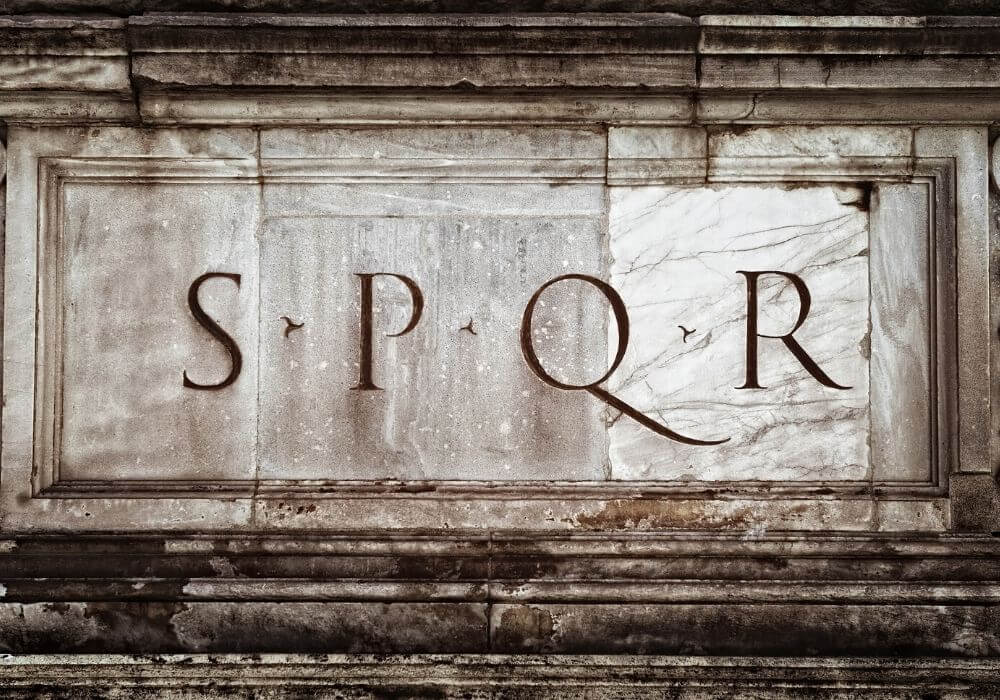
An abbreviation, a phrase, a motto, and an undying symbol of Rome, S.P.Q.R. became a visual symbol of the Roman republic and empire. It was usually portrayed with a wreath around it, on a red or purple flag, and often with the Aquila guarding over it. The abbreviation means Senātus Populusque Rōmānus, or “The Roman Senate and People” in English.
During the time of the Roman republic, it was the cornerstone symbol of the senate and government of Rome. It lasted through the period of the Roman empire too, and is popular to this day. It has appeared on Roman currencies, in documents, on monuments, and on various public works. Today, it’s widely used not only in Italy but all across Europe as most of central and western Europe has strong connections with ancient Rome.
Wrapping Up
Roman symbols continue to be popular, seen in various contexts around the world. Much like Greek symbols, Roman symbols also have influenced popular culture and are ubiquitous.
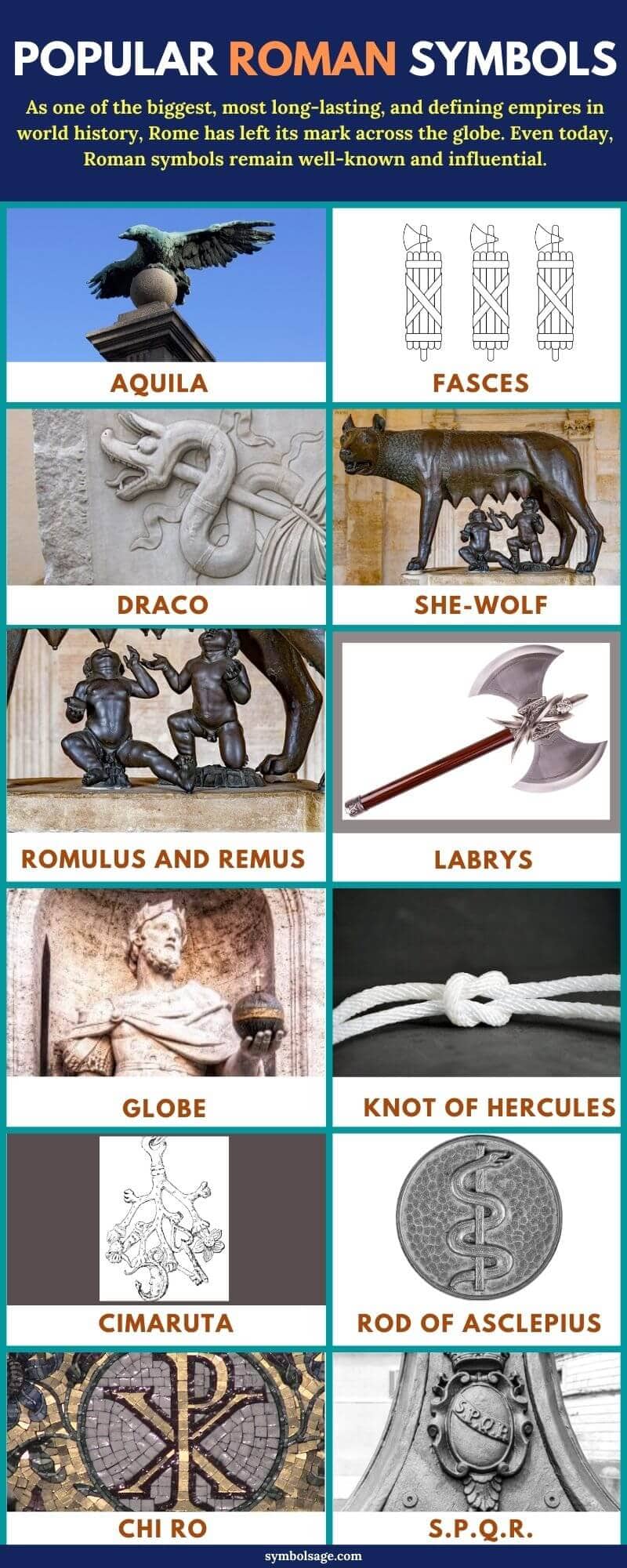
Related Articles:
11 Popular Symbols That Changed Meaning Over Time
15 Egyptian Symbols – And What They Signified (With Images)
8 Powerful Persian Symbols and What They Mean
Ancient Greek Symbols – History and Meaning
15 African Symbols of Strength
13 Most Important Wiccan Symbols and Their Meanings
13 Important Druid Symbols and What They Mean







